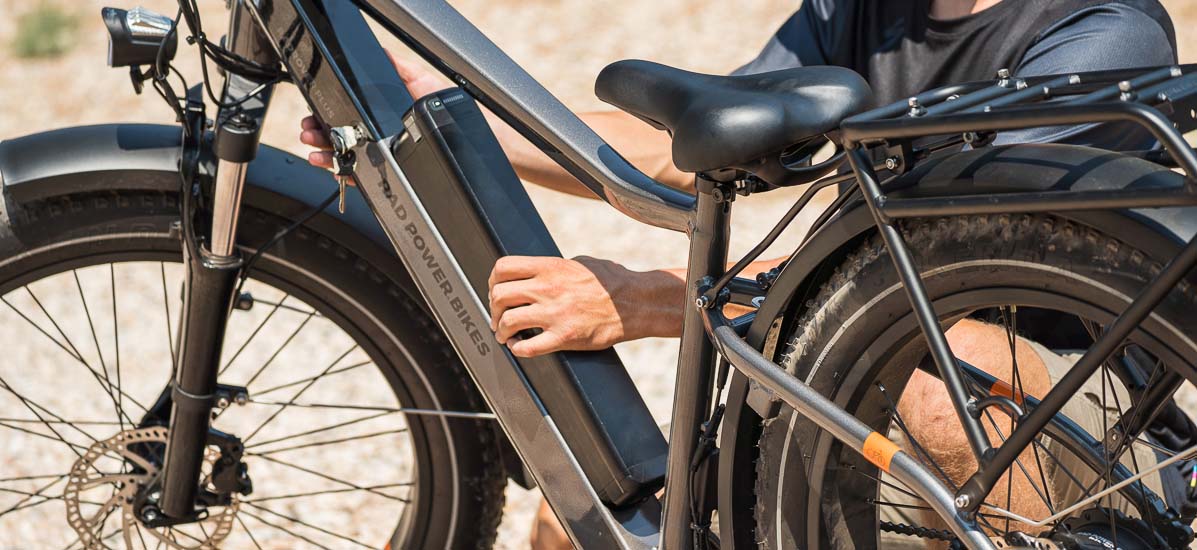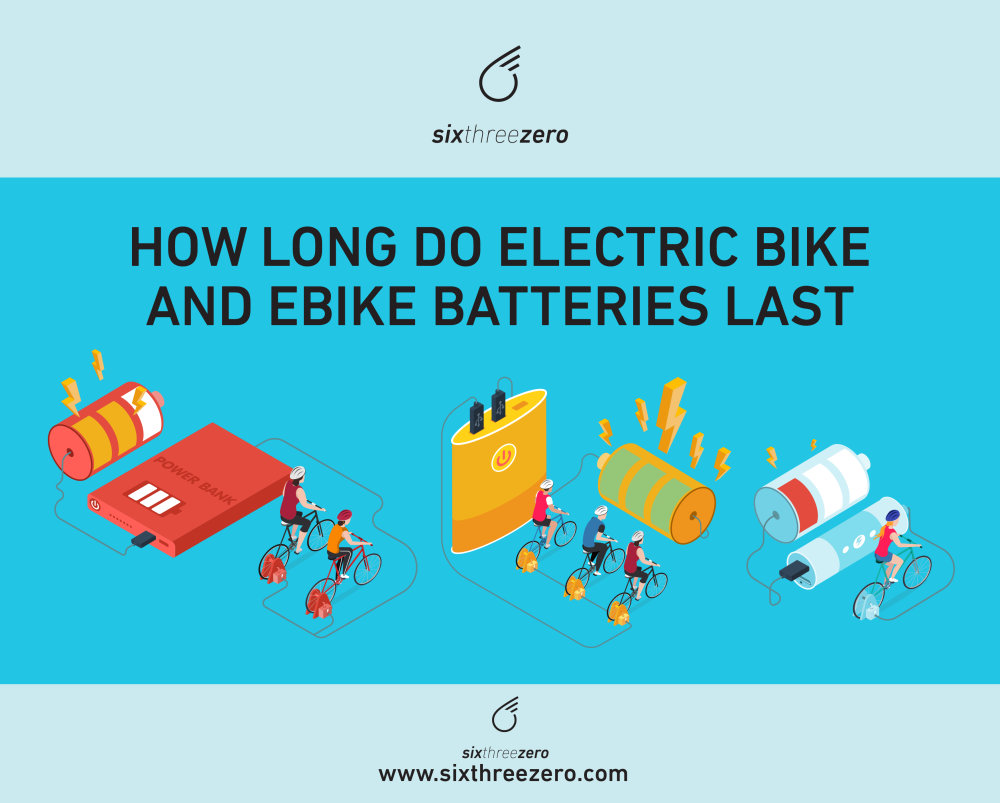The battery on an electric bike typically lasts between 20 to 70 miles on a single charge, depending on the battery capacity and the level of assistance used. This range can vary based on factors such as terrain, rider weight, and speed.
Electric bikes are popping up everywhere. They’re fun to ride, good for the planet, and can make your daily trips a whole lot easier.
But here’s the thing everyone wants to know: how long does the battery last on electric bike? It’s a big deal, right? Battery life decides how far you can go, how often you need to plug in, and honestly, how much fun you’re having.
So, let’s break it down together. We’ll look at what affects your electric bike’s battery, how to stretch it further, and what you can expect on real rides. Ready? Let’s roll!

Credit: retrospec.com
Battery Technology
Electric bike battery technology has seen significant advancements in recent years, greatly impacting the longevity and overall performance of these eco-friendly modes of transportation. Understanding the types of batteries used in electric bikes and the latest advancements in battery technology is crucial for those considering purchasing an electric bike.
Types of Batteries Used in Electric Bikes
Two primary types of batteries are commonly used in electric bikes: lithium-ion (Li-ion) and lead-acid.
– Lithium-ion (Li-ion) batteries are widely favored due to their lightweight nature, high energy density, and longer lifespan compared to lead-acid batteries.
– Lead-acid batteries, while less expensive, are heavier and have a shorter lifespan, making them less favorable for electric bike usage.
Advancements in Battery Technology
Recent advancements have seen the development of improved lithium-ion battery chemistries such as lithium iron phosphate (LiFePO4), providing increased safety, longevity, and reliability.
Additionally, advancements in battery management systems have optimized charging efficiency and overall battery performance, prolonging the lifespan of electric bike batteries.
Understanding these advancements in battery technology can aid in making an informed decision when choosing an electric bike, ensuring a longer-lasting and more efficient mode of transportation.
What Affects Battery Life?
Before we get into the nitty-gritty, let’s figure out what makes your battery tick—or stop ticking. A bunch of things can change how long it lasts. Knowing these can help you plan better and keep your rides stress-free.
Battery Capacity
Picture your battery like a water bottle. The bigger it is, the more you can drink—or in this case, ride. Battery capacity is measured in watt-hours, or Wh for short. A higher Wh number means more juice to keep you going. For example, a 500Wh battery lasts longer than a 300Wh one. Most electric bikes have batteries between 250Wh and 700Wh, though some fancy ones hit 1000Wh. But here’s the catch: even a big battery won’t last forever if you use it hard. It’s a starting point, not the whole story.
Riding Conditions
Next up, the world around you. Weather and conditions play a bigger role than you might think. Cold days? Bad news for your battery. The lithium-ion batteries in most electric bikes don’t love freezing temps—they slow down and lose some range. Wind matters too. Riding into a strong breeze makes your motor push harder, draining the battery faster. A tailwind, though? That’s free help! Even rain can sneak in, making tires slip and forcing the motor to work more. So, the weather outside isn’t just small talk—it’s a battery life factor.
Rider Weight and Cargo
Here’s a simple one: weight. The more your bike has to carry, the quicker your battery says goodbye. That’s you, any bags, or extra gear. Heavier riders or folks hauling groceries will see the battery drop faster. It’s like running with a backpack—you tire out sooner. Lighter loads mean longer rides. Pretty straightforward, right?
Pedal Assist Level
Most electric bikes let you pick how much help the motor gives you. These settings—usually eco, normal, or turbo—are a game-changer. Eco mode is gentle on the battery. You pedal more, and it sips power slowly. Turbo mode? It’s a beast. You’ll zoom up hills, but the battery takes a big hit. Want to go farther? Stick to lower assist levels when you can. Save the high power for when you really need it—like that steep climb you dread.
Terrain
Where you ride makes a huge difference too. Hills are battery killers. Going up means your motor’s working overtime, guzzling power. Flat roads or downhill stretches? Much easier. Your battery will thank you. The surface matters too. Smooth pavement is a breeze, but gravel or dirt paths fight back, making the motor work harder. So, if you’re chasing long rides, pick flatter, smoother routes when you can.

Credit: electricbikereport.com
How to Maximize Battery Life
Now that you know what drains your battery, let’s flip it. How do you make it last longer? With a few smart moves, you can stretch every charge and keep riding happily.
Charging Time Required
Knowing the approximate charging time required for your electric bike battery is essential for planning your daily rides efficiently. The charging time can vary depending on several factors, such as the battery type, capacity, and charger specifications.
On average, it takes around 4 to 6 hours to fully charge an electric bike battery using a standard charger. However, some advanced chargers can significantly reduce this charging time to as little as 1 to 2 hours. It’s always recommended to check the manufacturer’s instructions or consult a professional to determine the charging time requirements specific to your electric bike model.
Overnight Charging Vs. Partial Charges
When it comes to charging your electric bike battery, you have two primary options: overnight charging or partial charges throughout the day. Both approaches have their own advantages and considerations.
Overnight charging is a convenient option for those who ride their electric bikes on a daily basis. By plugging in your bike battery overnight, you ensure that it is fully charged and ready to go in the morning. This eliminates the need to constantly monitor the battery level and allows for a stress-free riding experience throughout the day.
On the other hand, some riders prefer partial charges, especially when they have access to charging stations at work or other locations. Partial charges involve topping up the battery during short breaks or whenever it is convenient throughout the day. It can be a practical approach to extend the overall range of the bike while minimizing the charging time required for a complete recharge.
However, it’s important to note that frequent partial charges may lead to decreased battery lifespan over time. Lithium-ion batteries, commonly used in electric bikes, are known to have a limited number of charge cycles. If you opt for partial charges, it’s essential to keep an eye on battery health and follow the manufacturer’s guidelines on proper charging practices.
Proper Charging Habits
Your battery needs some TLC. Don’t leave it plugged in all night—once it’s full, unplug it. Letting it drain to zero isn’t great either. Try to keep it between 20% and 80% charged for the best health. Going on a break from riding? Store it in a cool, dry spot, not too hot or cold. Treat it right, and it’ll stick around longer.
Maintenance Tips
A happy bike means a happy battery. Keep your tires pumped up—low pressure makes the motor struggle. A clean, lubed chain cuts down friction too. Check your brakes so they’re not dragging, and peek at the battery connections to make sure they’re clean. Little tune-ups like these keep everything running smooth and save power.
Riding Efficiently
How you ride is key. Ease into speed instead of flooring it—smooth moves save juice. Stick to lower assist levels when you don’t need a boost, and pedal more yourself. Gears help too—shift down on hills to lighten the motor’s load. Oh, and plan smart routes. Avoiding big climbs or rough patches can add miles to your ride.
Monitoring Battery Health
Understanding and monitoring the health of your electric bike’s battery is crucial to optimize its lifespan and performance. Regularly checking the battery health can help you anticipate potential issues, ensuring your bike remains efficient over time.
Signs Of Battery Degradation
Signs of battery degradation include reduced range, slower charging times, and fluctuating power output. If you notice these symptoms, it’s a clear indication that your battery may be deteriorating.
Importance Of Regular Maintenance
Regular maintenance such as cleaning and inspecting the battery contacts and connectors can prevent premature degradation. Consulting your manufacturer’s guidelines for maintenance schedules is also important.
Real-World Examples
Let’s make this real. Say you’ve got a 500Wh battery. What can you expect? It depends, but here are some snapshots.
- City Streets, Easy Mode: Flat roads, eco assist, no heavy bags. You could hit 60-80 miles. Nice, right?
- Hilly Day, Medium Effort: Some ups and downs, normal assist, a light load. Maybe 40-50 miles.
- Tough Terrain, Full Power: Steep hills, turbo mode, hauling stuff. You’re looking at 20-30 miles tops.
These are rough numbers. Your bike, your style, and your route tweak the results. But it shows how much things can shift!
Frequently Asked Questions
How Many Hours Does An Electric Bike Battery Last?
An electric bike battery typically lasts between 20 to 50 miles on a single charge.
How Far Can An Electric Bike Go On A Full Charge?
An electric bike can typically go up to 20-50 miles on a full charge, depending on battery and terrain.
How Much Does It Cost To Replace The Battery In An Electric Bike?
The cost to replace the battery in an electric bike varies, ranging from $200 to $800. Factors include battery type, brand, and capacity. Additional expenses may include labor charges for professional installation. Consult a bike shop for specific pricing and options.
How Often Do Ebikes Need To Be Charged?
Ebikes should be charged regularly, ideally after each ride, to ensure optimal performance. Charging frequency may vary depending on factors such as battery capacity and usage. It is generally recommended to charge ebikes at least once every few days to maintain battery health and extend its lifespan.
Conclusion
With the ability to last between 20-70 miles, electric bike batteries offer a convenient and eco-friendly mode of transportation. By understanding the factors that influence battery life, such as riding style and terrain, riders can optimize their bike’s performance.
Ultimately, the lifespan of an electric bike’s battery is determined by various variables, and proper care and maintenance are essential for longevity.




